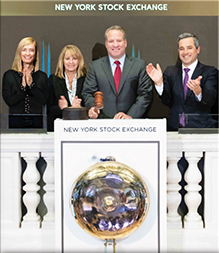How is the Roth 401(k) different than the traditional 401(k)
The most significant difference is the tax treatment of contributions and withdrawals. With a traditional 401(k), employee contributions go into the plan pre-tax and any distributions at retirement are considered taxable income. For the Roth 401(k) the reverse is true as contributions are made on an after-tax basis and the distributions are made free of any federal income tax.
Are the contribution limits different between the traditional 401(k) and Roth 401(k) accounts?
No. The limits for 2023 are $22,500 with an additional $7,500 “catch-up” contribution available to those who are age 50 and above. The total contribution amount of $22,500 (or $30,000) can be allocated between the two types of plans as long as the combined contribution amount does not exceed the stated limit.
Are transfers allowed between the traditional 401(k) and Roth 401(k) accounts?
Generally, once contributions have been designated to the traditional 401(k), assets cannot be transferred to the Roth 401(k) account. However, certain companies provide an in-plan Roth conversion option.
If there is an employer match, how is that allocated?
While employees can choose to allocate their contributions to either type of plan, any employer match must be done on a pre-tax basis. For that reason all employer match contributions would be made into the participants traditional 401(k) account.
How long before the assets in the Roth 401(k) are available, tax-free?
Generally, the assets must remain in the account for 5 years. In addition, the employee must be at least 59½ to take withdrawals tax-free.
Is the traditional 401(k) or the Roth 401(k) better?
It depends on the current and future tax rate for the participants. If your tax rate in retirement will be the same as your current tax rate, then both plans will produce the same amount of after-tax income. If your tax rate will be lower in retirement, then the traditional plan would be better. If your tax rate in retirement will be higher, then the Roth 401(k) makes more sense.
What other factors will make a difference?
Keep in mind that whatever tax rate prevails at retirement, you would still be receiving tax-free income from a Roth 401(k). This fact alone could make a significant difference in your total taxable income, which in turn will determine your tax bracket. In addition, tax-free income payments from your Roth 401(k) will have no impact on the taxability of Social Security benefits.
What are the rules on Required Minimum Distributions (RMD)?
While there are no RMD rules governing Roth IRA distributions, the same is not true for Roth 401(k) assets. These rules apply in the same way as they do for traditional 401(k) assets, where you must start taking distributions at age 72. A strategy to avoid RMDs would be to roll the Roth 401(k) to a Roth IRA before age 72.
Is there a limit on how long Roth 401(k) plans might be available?
The guidelines governing these plans are part of the Economic Growth and Tax Relief Reconciliation Act of 2001 (EGTRRA). The EGTRRA provisions were scheduled to end after 2010. However, the Roth 401(k) provision was made permanent under the Pension Protection Act of 2006.
Are employee loans available from a Roth 401(k)?
An employee’s Roth and Traditional 401(k) account balances would be combined for purposes of applying the plan loan rules. Those rules allow for a loan of 50% of the vested account balance with a $50,000 limit.
If someone is not eligible for a Roth IRA, are they eligible for the Roth 401(k)?
Yes. Some participants are prevented from making contributions to a Roth IRA because their Modified Adjusted Gross Income (MAGI) exceeds certain levels. The Roth 401(k) does not carry any income level requirements. Everyone who participates in a plan that offers a Roth 401(k) as an option can make use of the Roth 401(k) provision.
When heirs inherit a Roth 401(k), what will the tax treatment be?
Any distributions, or allowable rollovers, would be considered free of any federal income tax. This does not include any liability that may be incurred for applicable estate taxes.
What are the rollover options for a Roth 401(k) account?
A direct transfer from one Roth 401(k) plan to another would be allowed if permitted by the plan administrator. In addition, upon separation of employment or retirement, a participant would be able to roll their Roth 401(k) balance into a Roth IRA.







